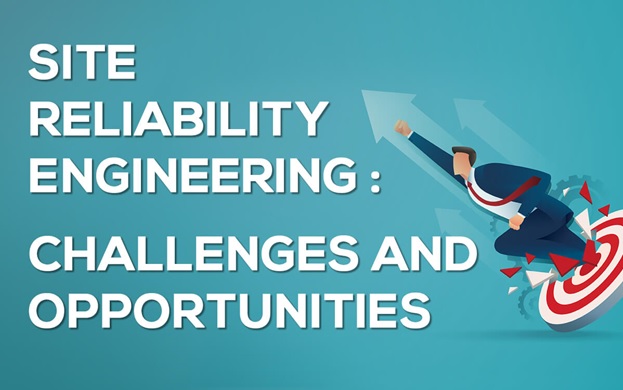Site Reliability Engineering: Challenges and Opportunities
Site reliability engineering (SRE) is a field of software engineering that focuses on the reliability, resilience, and durability of web and cloud-based systems. SRE strives to ensure that systems are reliable and accessible in the face of failures, attacks, and unexpected changes. In this article, we’ll discuss the main challenges and opportunities that SRE faces. We hope this will help you to better understand the role that SRE plays in your organization, and how you can support it.
Understanding Site Reliability Engineering Responsibilities and challenges
As web-based systems have grown in sophistication and importance, so has the need for engineers who can ensure that these systems are highly available and can withstand failures. Over the years, many solutions have been devised for scaling and replicating functions across multiple servers, but none of them are perfect. Site reliability engineers (SREs) are tasked with minimizing downtime and making the recovery from failures as quick as possible. They nurture an always-on culture that puts users’ expectations of availability to the test.
Traditional software engineering approaches tend to separate the development and delivery stages from operations; SRE is typically not so divisively inclined. Instead, SREs develop the required domain knowledge to operate the systems they build in collaboration with other engineers, and frequently take on responsibility for operational tasks. SREs are not usually project-based or time-bound, and instead tend to operate like a service team with on-call support and system maintenance responsibilities. This approach is generally more efficient, since problems are rarely faced twice by the same team member, and efficiency is one of the hallmarks of SRE work.
Since SREs operate in both development and operations domains, they require a diverse set of skills. These include core software engineering skills such as coding, plus systems knowledge to operate and debug the systems they build. Since these systems are typically microservices-based and span multiple servers, SREs also need a network perspective on the systems they build. This enables them to devise better ways to scale, replicate, and retool functionality to improve performance while maintaining reliability.
SREs constantly balance two opposing goals:
- Achieving quick execution with existing tools and code
- Investing in future development by experimenting with new tools and approaches.
They must also balance their responsibilities with those of other engineers in their group. Particularly in the beginning of an SRE deployment, the team must not distract engineers who don’t belong to the SRE team but still need their help with operations tasks.
How do SRE Cope Up with the Responsibilities and Challenges

With so many responsibilities and challenges, it’s important for SRE teams to optimize their workflow. One common approach is to have two teams—an escalation team and an on-call team.
- The on-call team takes daily calls to address production issues, while the escalation team supports them by developing long-term fixes to prevent these issues from recurring.
- Another approach is to have full-time SRE engineers who take calls when necessary and devote the rest of their time to long-term projects.
- Regardless of how an organization structures its SRE teams, they must ensure they have the right people with the right skills on the teams that need them.
- An SRE with too many project responsibilities will suffer from boredom and a loss of focus, while an engineer who doesn’t have enough SRE—or any developer—skills will struggle to solve production issues and improve the system.
Education and Training
SREs must be able to conduct their work independently. This means they need the ability to learn new tools and technologies, as well as the self-discipline to use these tools responsibly, properly, and efficiently. The most popular tools for SREs are container management systems such as Google Container Engine, or GKE, and cloud platforms such as Google Cloud Platform, or GCdP. Both of these tools suites come with built-in toolchains for development and deployment, monitoring, measurement, and analysis (MMA) as well as an ever-growing library of open-source toolchains for more specialized functions. SREs must be able to identify and incorporate these specialized toolchains to achieve their goals.
SREs also need to learn how to define, design, and implement reliable systems. Many existing SREs have backgrounds in computer science, software engineering, or a similar field. Though this background has helped them succeed so far, there is now a growing demand for SREs who have a knowledge of system design and networking fundamentals. For those with less system design expertise, attending workshops and training programs on network monitoring or distributed systems could be helpful.
As the role of SRE grows, the level of training for new candidates will need to grow as well. Currently, most new SREs should be expected to have some experience in developing and running applications, but this may change as the average aptitude level rises. It’s likely that a future SRE might not always have a software development background, perhaps coming instead from system administration, cloud operations, or similar fields.
Opportunities for an SRE
An ideal SRE is motivated by more than just a paycheck. They want to improve systems and processes while learning new technologies and expanding their capabilities. An ideal workplace provides complex problems to solve and the resources needed to solve them. From the point of view of an employer – particularly one with budgetary constraints – this can seem like a tall order. However, almost all such projects have started with small budgets and minimal hardware, only to see those budgets and resources grow as they were spent efficiently and productively.
As the demand for SREs grows, it’s likely that their salaries will increase. This does not mean that employers should avoid overpaying in the short term; after all, paying an SRE properly will save money in the long run. A good first step for organizations starting an SRE program is to consult professional SRE teams about available talent. They have already interviewed the candidates and can offer guidance on current salaries or even make suggestions about who should be hired from outside the organization.
Training and development
With a growing pool of SRE candidates, it will be important for organizations to provide the resources needed to retain them. This will include pay increases, but likely also a growth in responsibilities and a continuing education program. As more SRE teams are created, they will need to grow their own talent internally. This may mean training new SRE recruits or helping experienced engineers evolve their responsibilities.
Why TaUB Solutions for SRE Training?
- On the occasion of the 8th year anniversary we are giving back to our clients and are running a special promotional campaign with a 10% discount on combo deals.
SRE Foundation + SRE Practitioner which includes:
- SRE Foundation Virtual Instructor-Led Training for 2 Days + Materials + Exam
- SRE Practitioner Virtual Instructor-Led Training for 3 Days + Materials + Exam
- Get Trained by the only Elite Partner of DevOps Institute from India in 2022.
- Our Mentor Suresh GP is a Certified Enterprise coach and he is the Co-Author of the SRE practitioner course of DevOps Institute.
Join the training today!!!
Suresh GP is the Managing Director of TaUB solutions Pte Ltd, Singapore & TaUB Solutions LLP in Bangalore. He has more than 18 years of experience in IT Service Management, IT Governance, BRM, Agile, DevOps and Organizational Change Management. He is a regular blogger and International speaker at itSMF UK, itSMF (Australia, USA, Finland, Norway, Singapore).





